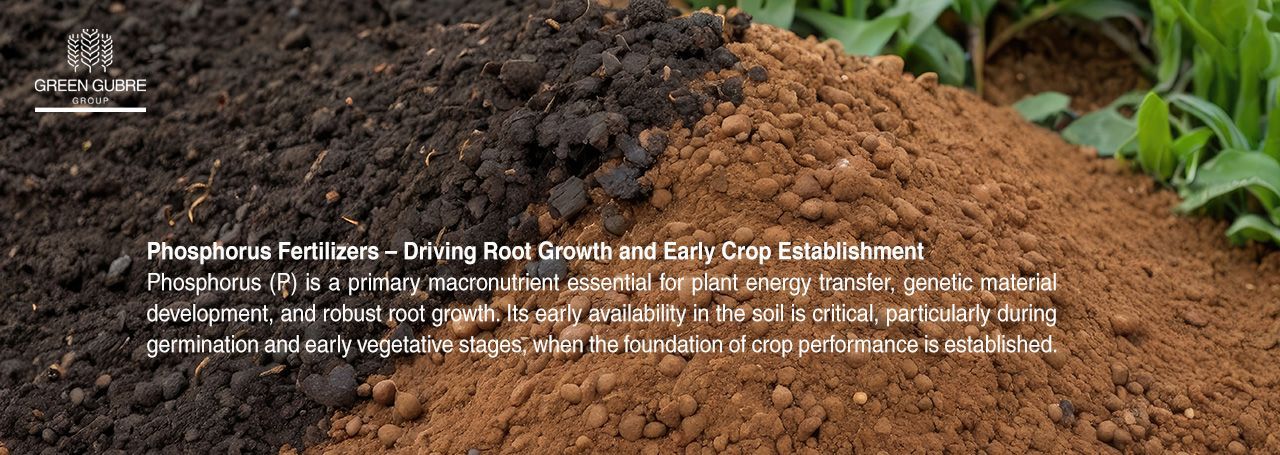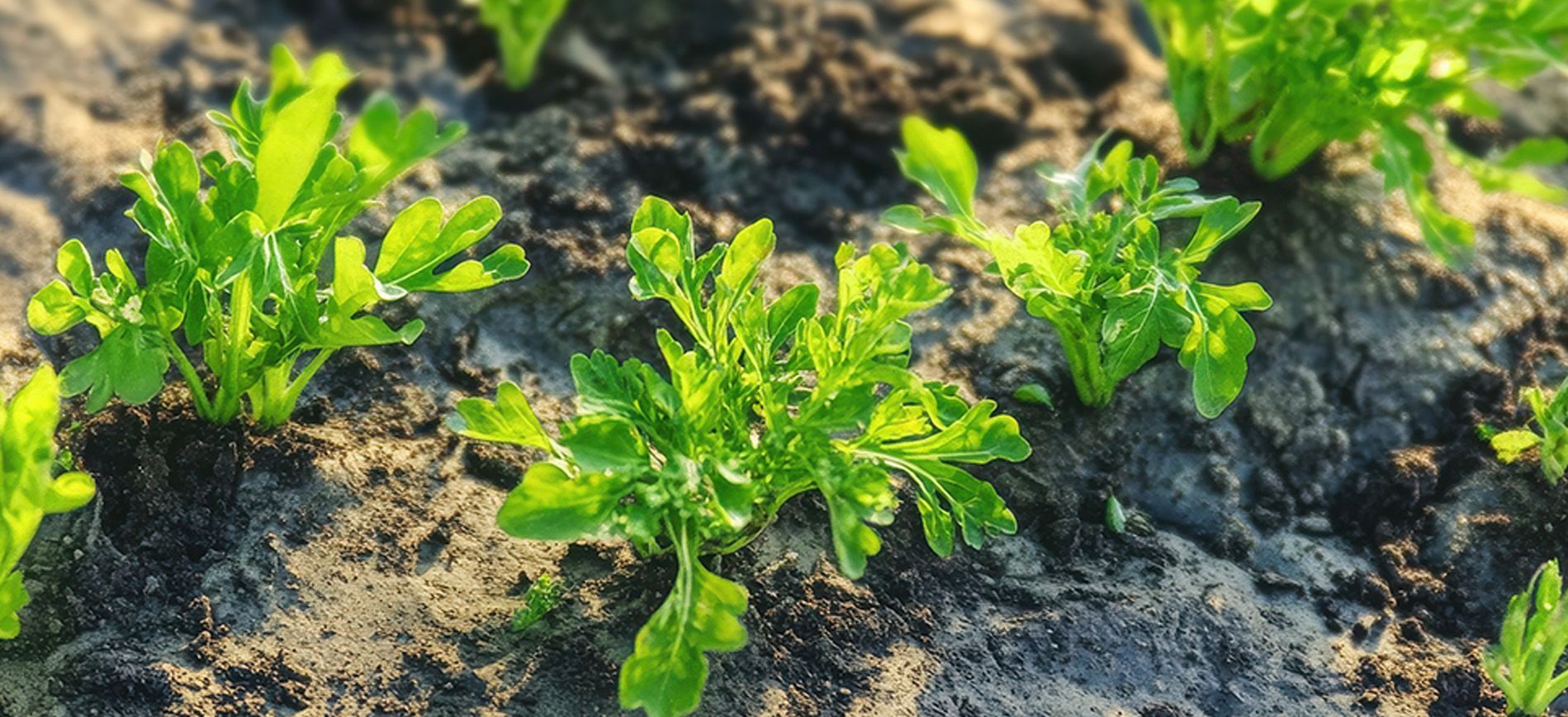Phosphorus Fertilizers – Driving Root Growth and Early Crop Establishment
Phosphorus Fertilizers – Driving Root Growth and Early Crop Establishment

Introduction: The Starter Nutrient for Strong Foundations
Phosphorus (P) is a primary macronutrient essential for plant energy transfer, genetic material development, and robust root growth. Its early availability in the soil is critical, particularly during germination and early vegetative stages, when the foundation of crop performance is established. Without adequate phosphorus, crops struggle to develop efficient root systems, which limits their ability to uptake water and nutrients, and hinders overall vigor. In phosphorus-deficient soils, yield reductions of over 30% have been observed, especially in cereals, legumes, and root crops. Optimizing phosphorus application enhances root expansion, speeds up early growth, and enables crops to access moisture and nutrients more effectively throughout the season.
1. Why Crops Need Phosphorus
Phosphorus is involved in nearly every metabolic process in a plant. It’s a fundamental component of:
- Adenosine triphosphate (ATP): The molecule that stores and transfers energy for cellular functions like nutrient uptake and growth.
- Nucleic acids (DNA & RNA): Vital for cell division and gene expression.
- Root development: Phosphorus stimulates root elongation and density, providing seedlings with a stronger start and improved drought resilience.
- Reproductive growth: Adequate phosphorus promotes flowering, seed formation, and fruit quality.
Deficiency Symptoms:
- Purple/reddish tint on older leaves, particularly in maize and legumes
- Stunted growth and delayed maturity
- Reduced tillering in cereals
- Underdeveloped root systems affect nutrient and water uptake
2. Types of Phosphorus Fertilizers
Different phosphorus fertilizers are suited for varying crops, soil types, and application methods. Major forms include:
- Single Superphosphate (SSP – 16% P₂O₅): Contains phosphorus, calcium, and sulfur. Ideal for leguminous crops and sulfur-deficient soils.
- Triple Superphosphate (TSP – 46% P₂O₅): Higher concentration of phosphorus, used in basal applications for quick plant availability.
- Diammonium Phosphate (DAP – 18-46-0): Combines nitrogen and phosphorus—excellent starter fertilizer for cereals and pulses.
- Monoammonium Phosphate (MAP – 11-52-0): Highly soluble and suitable for acidic soils or fertigation in high-value crops.
- Rock Phosphate: A natural, slow-release source favored in organic systems and acid soils, though less available in alkaline conditions.
Choosing the right phosphorus fertilizer involves considering several key factors, including pH, crop type, soil texture, and the timing of application.
3. Crop-Specific Applications and Use Cases
Phosphorus impacts virtually every crop, but some benefit more distinctly when applied strategically:
- Cereals (wheat, rice, maize): Basal DAP or MAP increases root mass and improves panicle development, boosting yield stability.
- Legumes (soybean, chickpea, lentil): Essential for nodulation and nitrogen fixation. Early phosphorus enhances pod and seed set.
- Oilseeds (canola, sunflower, groundnut): Encourages early canopy development and improves oil quality.
- Vegetables (onions, carrots, tomatoes): Supports rapid root development, flowering, and uniform fruit formation.
Localized applications—such as banding near the seed row—enhance phosphorus availability and reduce fixation in high-clay or alkaline soils.
4. Market Trends and Regional Demand
- India: DAP dominates phosphorus use. Government subsidies make it affordable, though overreliance can skew N:P balance.
- Africa: Over 70% of soils are phosphorus-deficient, resulting in under-application in cereal and legume yields below application limits. Rock phosphate is increasingly recommended for use in acid soils.
- Brazil: Known for acidic, phosphorus-fixing soils. Farmers use advanced placement technologies and high-dose MAP applications.
- China: Encouraging soil testing and MAP-based formulations to increase phosphorus efficiency and reduce environmental impact.
The global demand for phosphorus fertilizers is expected to reach 50 million metric tons of P₂O₅ by 2030, driven by population growth, declining soil fertility, and the expansion of cropping areas.
5. Green Gubre Group – Rooted in Phosphorus Excellence
At Green Gubre Group, we recognize phosphorus as the strategic nutrient that anchors productivity. Our offerings include:
- Granular DAP, MAP, TSP, and SSP for field crops
- Soluble MAP and P-enriched blends for fertigation or greenhouse systems
- Rock phosphate and organic-approved inputs for regenerative agriculture
- Crop-specific P-rich NPK blends for optimized basal nutrition
- Consulting on phosphorus management, including placement, timing, and compatibility with soil pH and irrigation type
With phosphorus, the right start makes all the difference. Let us help your crops establish strong roots and deliver strong results.




